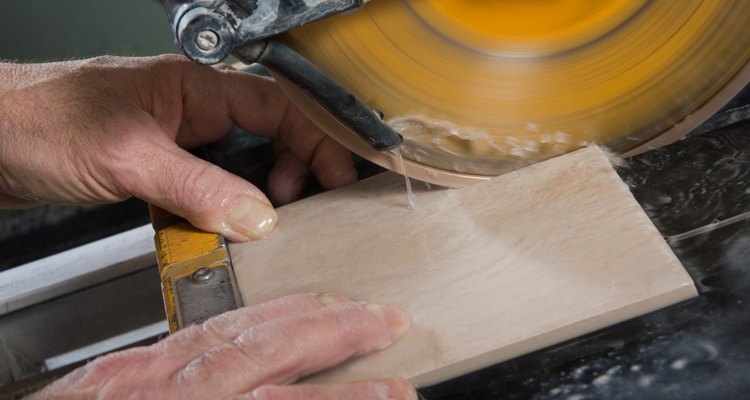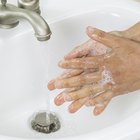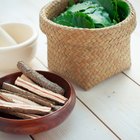
Jonathan Hill/iStock/Getty Images
Marble is a metamorphic limestone that is widely used in the sculpturing of statues and the construction of buildings and monuments. It is commonly used in tiles, countertops and indoor flooring. Working with these materials generates marble dust, which can cause respiratory issues and irritation of the eyes and skin.
Silicosis
Stone carving of a hard stone like marble requires the use of power tools such as saws, drills, grinders and sanders. Inhaling marble dust causes toxic effects on the respiratory system. Workers and residents living in areas adjacent to stone quarries are prone to a disease called silicosis, whereby inhaled marble dust damages the cells of the respiratory system. Symptoms include a chronic cough and shortness of breath. There is no specific treatment other than supportive treatment such as cough medicine, bronchodilators and oxygen. People with silicosis have a higher risk of developing tuberculosis. Wearing a protective respirator may decrease risk of inhaling marble dust.
Eye Irritation
Grinding and polishing marble releases small particles of stone and dust into the air. Exposure to the eyes with airborne marble dust causes irritation because of the abrasiveness of the product. Recommended first-aid measures include flushing the eyes with water thoroughly for 15 minutes, gently lifting the eyelids and rinsing under the eyelids and avoid scrubbing or rubbing the eyes. Seek medical attention if irritation and discomfort persist. Wearing eye protection may decrease risk of eye irritation when working with marble.
Scleroderma
Marble dust is abrasive and causes irritation to the skin. Stonemasons who have long-term exposure to marble dust have a high risk of developing scleroderma. This is a rare and progressive disease that involves the hardening and tightening of the skin and connective tissue. It results from the overproduction and accumulation of collagen in the body tissues. Exposure to silica, which is a component found in marble dust, is one risk factor for developing scleroderma.
Related Articles

Safety Hazards of Acetone

What Are the Dangers of Tantalum?

How to Sterilize Eyeglasses

How to Disinfect Sunglasses

Benefits of Shea Butter and Coconut Oil ...

The Effects of Inhaling Air Dusters

Dangers of Spray on Tan

Levels of Polarized Sunglasses

Harmful Effects of Wearing Magnetic ...

List of Retinoids

Problems With Nose Piercings

What Is Bio-Flex Made of for Piercings?

How to Use Colloidal Silver to Kill ...

How to Prevent Pock Holes From ...
Brazilian Pepper Wood for Cooking

Health & Safety Policy for Child Care ...

The History of Steel Toe Boots

Side Effects of Certain Dri

Neem Bark Benefits

Subungual Warts and Treatment
References
Writer Bio
Maryann Gromisch is a registered nurse and a freelance writer. She has clinical experience in medical, surgical and critical care nursing. Since October 2009 she has written articles related to the digestive system for Empowher.com, a women's health online magazine. She has a bachelor's degree in nursing from Southern Connecticut State University, New Haven.
Photo Credits
Jonathan Hill/iStock/Getty Images